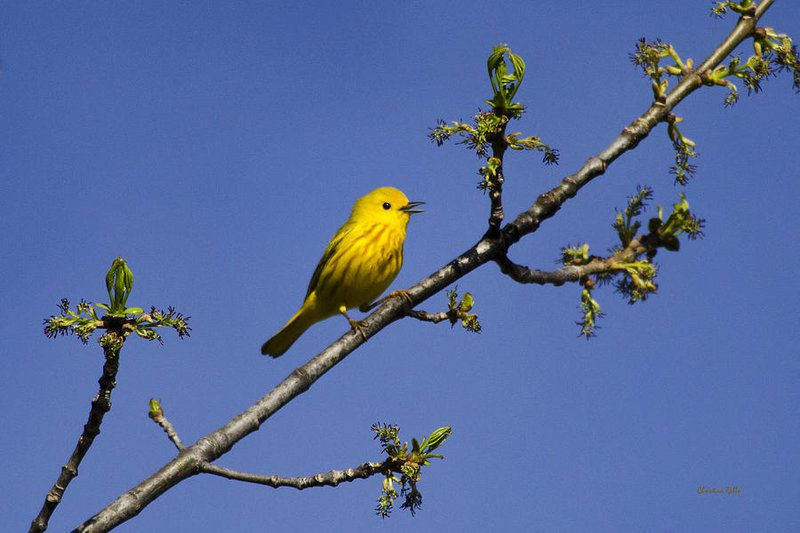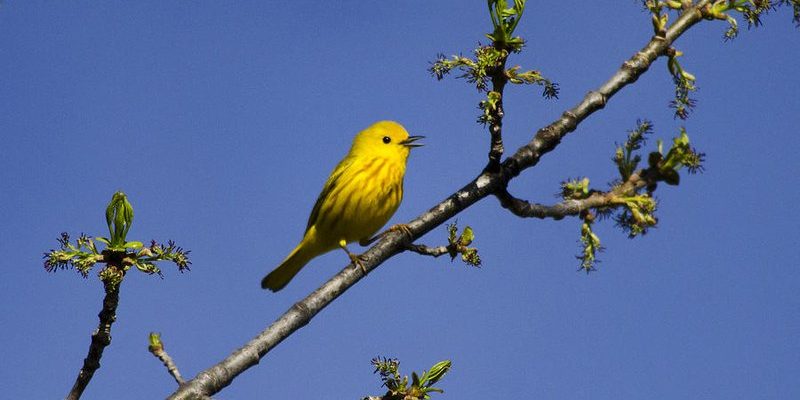
When you think of songbirds, the term “warbler” might not be the first thing that pops into your mind. But these little feathered friends are some of the most charming and diverse members of the bird family. Imagine a tiny bird, flitting from branch to branch, filling the air with its melodious tunes. That’s a warbler for you! They are often found in forests, wetlands, and sometimes even in your backyard, singing their hearts out, and brightening up the day for anyone lucky enough to catch a glimpse.
Warblers belong to the family Parulidae and are primarily known for their vibrant colors and beautiful songs. They come in many shapes and sizes, but what truly sets them apart is their incredible vocal ability. You might say they’re like the talented musicians of the avian world, each species having its unique sound. Whether you are a budding birdwatcher or just someone who appreciates nature, getting to know warblers can be a delightful experience.
What Are Warblers?
Warblers are small to medium-sized passerine birds characterized by their colorful plumage and, often, a great deal of energy. They primarily inhabit North and Central America, and some species are migratory, traveling thousands of miles between their breeding and wintering grounds. Their size can vary, but most warblers are about 4 to 6 inches long, making them easy to spot if you know where to look.
While warblers may all belong to the same family, each species has its own unique traits, behaviors, and habitats. Some prefer dense forests, while others can be found in open fields or wetlands. This diversity in habitat is a big reason why there are over 50 species of warblers in North America alone! From the striking yellow of the Common Yellowthroat to the vibrant blue of the Cerulean Warbler, these birds offer a colorful display for nature lovers.
Physical Characteristics
Warblers showcase an impressive variety of physical traits, which make them easily identifiable yet incredibly diverse. Their plumage can range from bright yellows and vibrant blues to muted greens and browns, depending on the species. A fascinating aspect of warblers is their sexual dimorphism. In many species, males are often more colorful and striking compared to females, who may have more subdued tones to help them blend in while nesting. This is a wonderful example of how nature often prioritizes survival through camouflage.
Warblers also exhibit distinct markings that can help you identify them in the wild. Many have unique streaks, spots, or eye-rings, which can be quite striking when observed up close. For example, the Yellow Warbler features a bright yellow body adorned with subtle red streaks across its chest, while the Black-throated Blue Warbler is known for its bold black throat and striking blue back. These unique characteristics make warblers a favorite among birdwatchers and photographers alike.
Behavior and Feeding Habits
Warblers are known for their energetic behavior and active foraging habits. They are insectivores, meaning they primarily feed on insects like caterpillars, beetles, and spiders, especially during the breeding season when protein-rich food is crucial for raising their young. You might see them flitting from branch to branch, hopping along tree trunks, or even hanging upside down to reach their meals. This active feeding behavior is not only entertaining to watch but also serves to keep their populations healthy and thriving.
During migration, many warblers change their diet to include more fruits and seeds, allowing them to gain the necessary fat reserves to fuel their long journeys. They tend to travel in small flocks, which can make spotting them easier for birdwatchers. The social nature of warblers, particularly during migration, is a wonderful aspect of their behavior. You might even catch them singing together, creating a beautiful symphony of sounds that fills the landscape.
Migration Patterns
Most warblers are migratory birds, traveling hundreds or even thousands of miles between their breeding and wintering grounds. This migration process is a fascinating spectacle, as many of these birds engage in long-distance flights from North America to Central America or even as far as South America. The timing of this migration is often tied to seasonal changes, with many warblers departing for their winter homes in late summer or early fall and returning in the spring to breed.
During migration, warblers often rely on specific landmarks, such as rivers and mountain ranges, to navigate their journey. Interestingly, some species follow similar paths year after year, which emphasizes their incredible memory and instinctual abilities. If you find yourself outdoors during migration season, keep your eyes peeled! You may witness a breathtaking display of colors as these tiny travelers pass overhead.
Habitat and Conservation
Warblers thrive in a variety of habitats. While many prefer dense forests with plenty of cover, others can be found in wetlands, grasslands, or even urban parks. Each species has its preferences, making it crucial to understand their specific needs to help conserve their populations. Habitat loss due to deforestation, urbanization, and climate change poses a significant threat to many warbler species. Maintaining healthy ecosystems and preserving natural habitats is essential for their survival.
Several organizations work tirelessly to protect and conserve warbler habitats across North America. You can do your part too! Whether it involves planting native flora in your backyard, supporting local conservation efforts, or even participating in birdwatching events, every bit of effort counts. By supporting these initiatives, you’re helping ensure that future generations can experience the beauty and joy of warblers.
Fun Facts About Warblers
| Species Count | Over 50 species in North America |
| Size | Typically 4 to 6 inches long |
| Coloration | Range from bright yellows to muted greens |
| Diet | Insects, fruits, and seeds |
| Migration | Travel thousands of miles seasonally |
| Song | Known for their melodious and diverse calls |
Warblers in Popular Culture
Warblers have made their mark not only in the wild but also in popular culture. Their beautiful singing has inspired poetry, music, and even art throughout history. Many birdwatchers document their sightings and share their experiences, creating a rich tapestry of stories and appreciation for these remarkable creatures. Warblers have also become a subject of fascination in various media, with documentaries showcasing their migratory journeys and enchanting songs. They remind us of the beauty of nature and the importance of preserving it.
In addition to their presence in the arts, warblers also serve as a symbol of environmental health. Their sensitivity to habitat changes makes them valuable indicators of ecosystem health, urging us to pay attention to the world around us. As we share and enjoy our experiences with these birds, we also foster a deeper appreciation for the natural world and our role in protecting it.
FAQ
What is the lifespan of a warbler?
The lifespan of a warbler can vary significantly depending on the species and environmental factors. On average, many warblers live around 2 to 5 years in the wild. However, some individuals have been known to live longer, especially in protected habitats with fewer threats. Factors like food availability, predation, and habitat quality play crucial roles in determining their longevity.
How can I attract warblers to my backyard?
If you want to attract warblers to your yard, consider planting native flowering plants and shrubs that produce berries. Warblers are known to feast on fruit and insects, so creating a habitat rich in these resources can provide the perfect environment. Additionally, providing clean water sources and maintaining some natural cover will help make your yard inviting for these colorful songbirds.
Are all warblers migratory?
Not all warblers are migratory, but many species do migrate to find suitable breeding grounds or avoid harsh winter climates. Some warblers, particularly those in southern regions, might remain in their territories year-round. Migration patterns can vary widely among species, so it’s essential to research specific types to understand their behavior fully.
What do juvenile warblers look like?
Juvenile warblers often have different plumage compared to adults, which helps them blend into their surroundings for added protection against predators. Their coloration tends to be more muted and less vibrant than adult birds. Depending on the species, they may have different patterns and markings as they mature. Observing juvenile warblers can be a delightful experience as they learn to navigate their environment.
What are some common types of warblers found in North America?
Several common warbler species in North America include the Yellow Warbler, Common Yellowthroat, Black-throated Blue Warbler, and the American Redstart. Each of these birds has distinct characteristics and songs that endear them to birdwatchers. Understanding these species can enhance your birdwatching experiences and create opportunities for meaningful encounters.
Do warblers sing year-round?
Warblers typically sing during their breeding season, which varies based on the species and location. Males use song as a way to attract females and establish territory. Outside of breeding season, their vocal activity decreases significantly. However, some warblers may vocalize during migration or in wintering grounds, creating a delightful experience for those lucky enough to hear them.
How do warblers communicate with each other?
Warblers primarily communicate through vocalizations, using songs and calls to convey a range of messages to other birds. Their unique songs are often used to attract mates or defend territory, while calls may signal alarm or serve other social purposes. The complexity of their communication system is part of what makes observing warblers so fascinating, as each song can tell a story of its own.
Why are warblers important for ecosystems?
Warblers play a vital role in maintaining healthy ecosystems. As insectivores, they help control insect populations, contributing to the balance of the ecosystem. Additionally, their migration patterns can affect the distribution of seeds and plant species, promoting biodiversity. Protecting warblers and their habitats can have positive ripple effects throughout the entire ecosystem, highlighting their importance in the natural world.
Can I see warblers in urban areas?
Yes, you can often spot warblers in urban areas, especially in parks and green spaces with sufficient vegetation. While they prefer natural habitats, many species have adapted to urban environments, finding food and shelter amidst the bustling city life. Keeping an eye out for them in these areas can be rewarding, as they often take advantage of any greenery available.
What should I do if I find an injured warbler?
If you encounter an injured warbler, the best thing to do is to contact a local wildlife rehabilitation center. It’s crucial not to attempt to care for the bird yourself, as improper handling can harm it further. Professionals have the training and resources to properly assess the bird and provide the care it needs. Remember to minimize disturbance and ensure the area around the injured bird is calm while waiting for help.
What makes warblers such unique birds?
Warblers are uniquely fascinating due to their vibrant colors, beautiful songs, and diverse behaviors. Their adaptability to various habitats and their migratory nature showcase their incredible resilience and the intricate connections within ecosystems. As observers, we can appreciate not just their beauty but also their role in the greater tapestry of life, making them a truly remarkable group of birds.

